2017 Final Consolidated Industry Draft Rankings

By Jeremy Davis
6 years agoWith only hours to go before the draft gets underway, let’s take one final look at how the mainstream industry rankings have sorted through the prospects available in this draft. After all the drama that happened when I looked at the variance between the rankings, I feel compelled to point out that this list is for your benefit as the reader. See what the average industry opinion is. If you’ve visited this site at all in the last 5 weeks, you’ll know that we’ve created our own separate list, which differs from this consolidated version in many ways – which we’ll revisit later.
With the release of Bob McKenzie’s rankings earlier this week, all included lists are now in their final version. Here are the lists we’ve included.
| Service | Future Considerations | Hockey Prospect.com | ISS | McKeen’s | TSN Craig’s List | TSN Final | Sportsnet | The Hockey News | ESPN | Sports Illustrated | Dobber Prospects | The Draft Analyst |
| Author | Staff | Staff | Staff | Staff | Craig Button | Bob McKenzie | Jeff Marek | Staff | Corey Pronman | Daniel Friedman | Cam Robinson | Steve Kournianos |
| Date | May 17th | June 8th | June 6th | May 31st | June 7th | June 19th | May 23rd | May 15th | May 19th | June 5th | June 8th | June 11th |
Another change since the last list was issued in March: I’ll give you a top 100 this time, much like the list that we concluded last Friday. Most other services have provided lists of at least 100 players, if not many more, and so there is enough information to provide a much longer list.
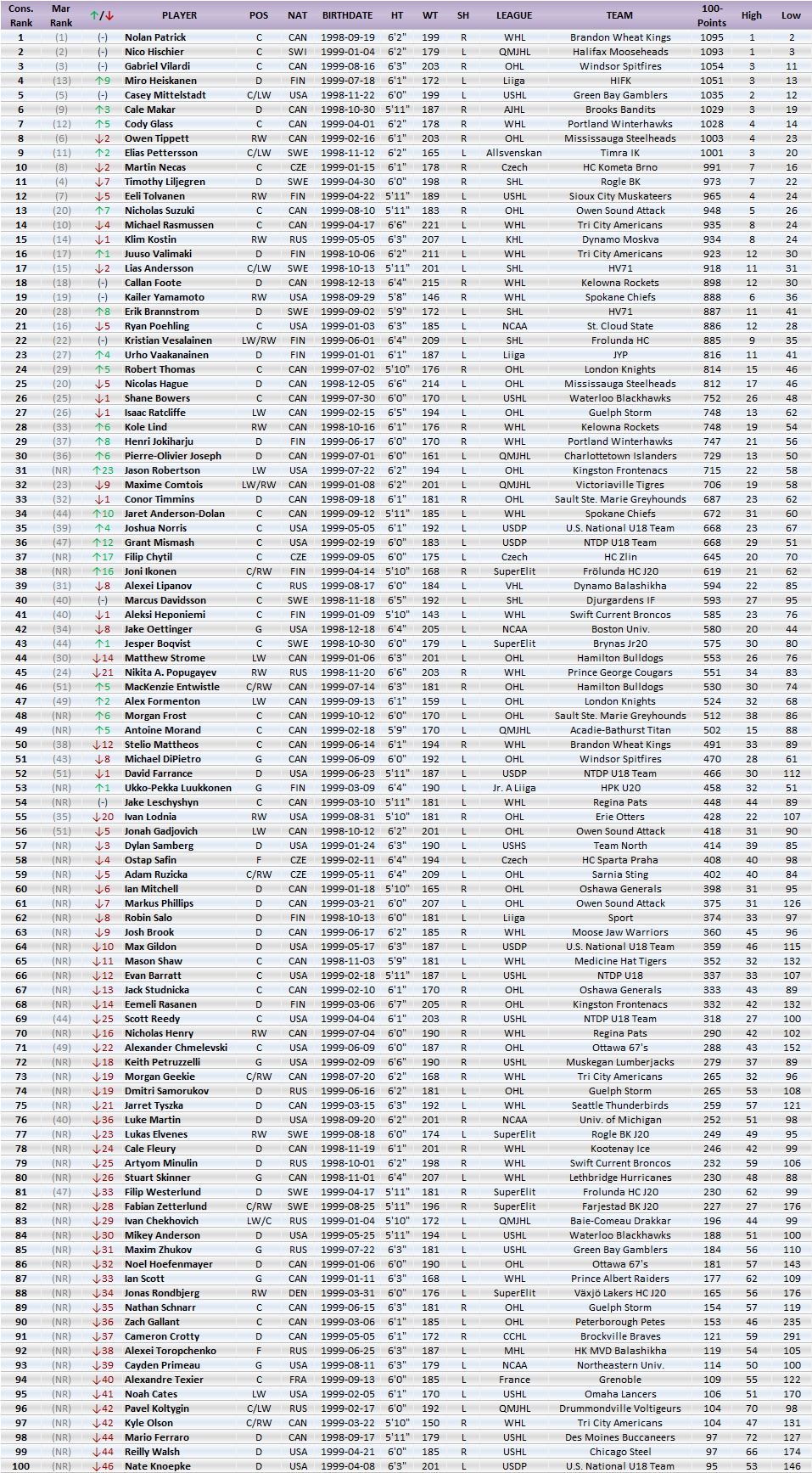
Here’s how the first round breaks down. It’s difficult to tier a draft as open as this one, but I’ve done my best. Nico and Nolan are in a league of their own, grappling for first overall. There seems to be a separation between the the next five players and the group after them. This second tier contains Gabe Vilardi, Miro Heiskanen, Casey Mittelstadt, Cale Makar, and Cody Glass. It would be safe to expect one of these five players to be picked with each of the third, fourth, and fifth selections, before things really get wide open.
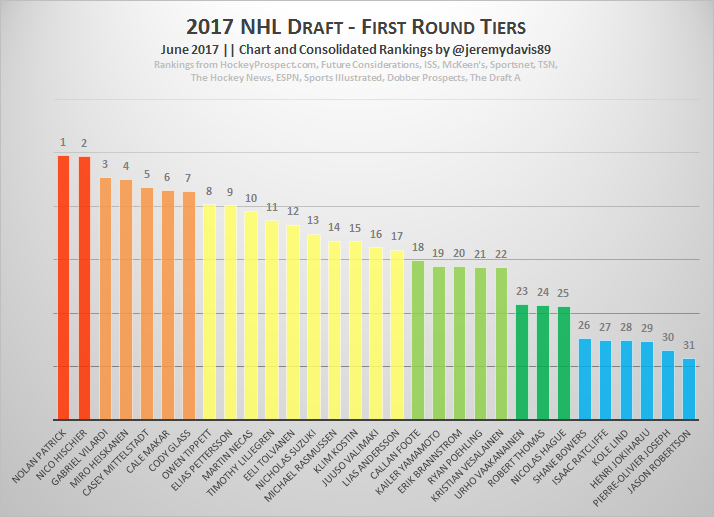
A third tier of prospects ranges from 8th all the way to 17th. Although there is a discernible difference between 8th and 17th, the difference between 17th and 22nd is largely negligible – I told you this was a difficult draft to tier. After 22nd, there seems to be a fairly discernible drop off.
Month-to-Month Rankings
Many scouting services and sports entities released rankings on a monthly, or bi-monthly basis. Over the course of the season, I kept track of each of these releases, using them for the site’s Consolidated Rankings, but also to satisfy my own curiosity. I’ve included the top 31 of several of these rankings here, to show how the lists have changed over the course of the year. Each of these rankings have been displayed publicly (some, like HockeyProspect and McKeen’s have deeper rankings for subscribers that I have not included here), so hopefully I’ll avoid offending any services by revealing information that they’re trying to charge money for (also, I paid money for all of those, so appreciate that, please).
HockeyProspect.com
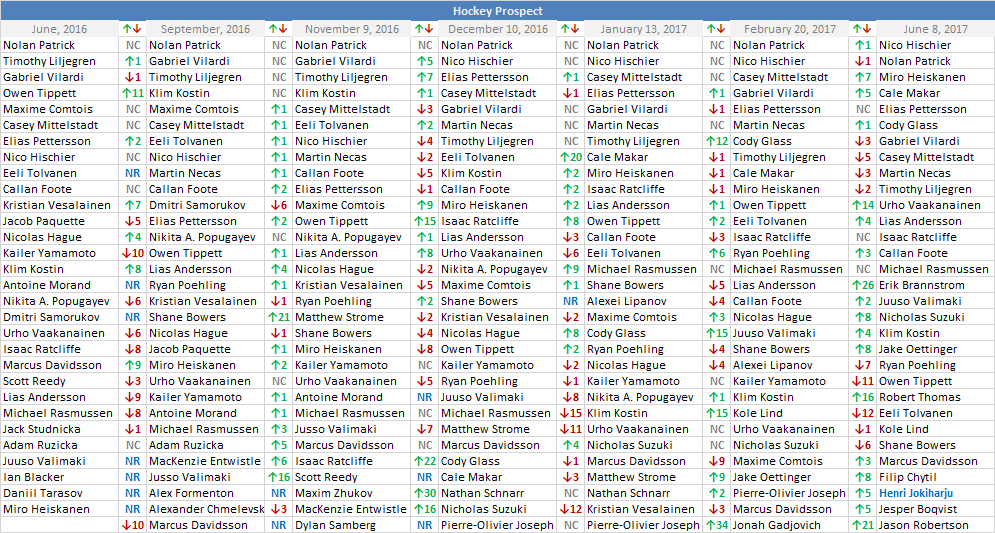
Future Considerations
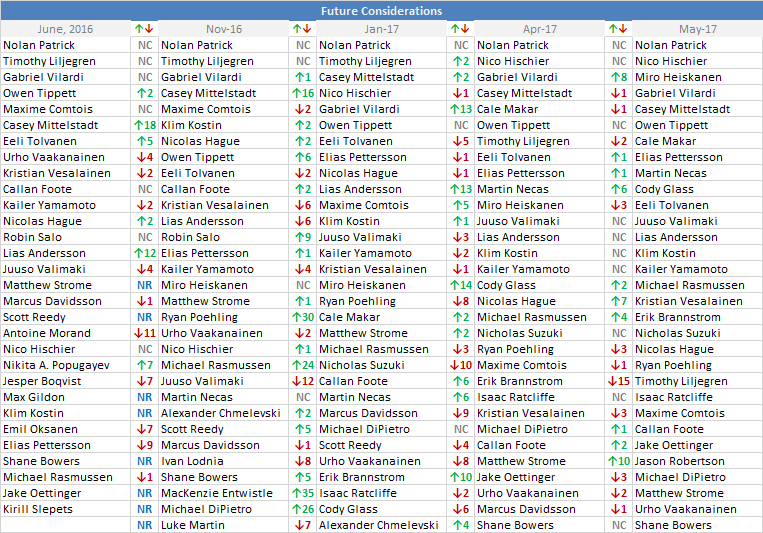
McKeen’s Hockey
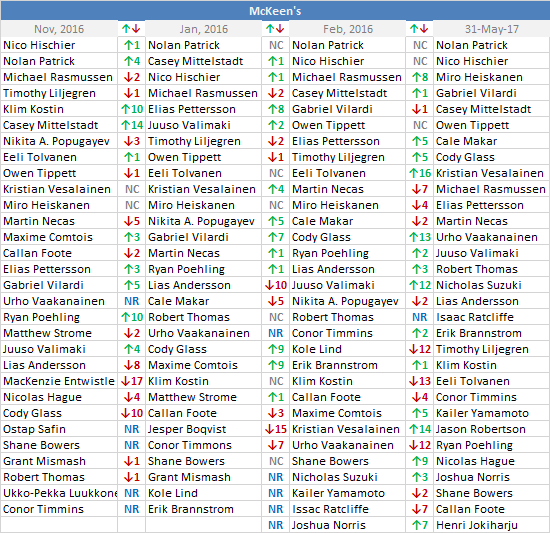
International Scouting Services (ISS)
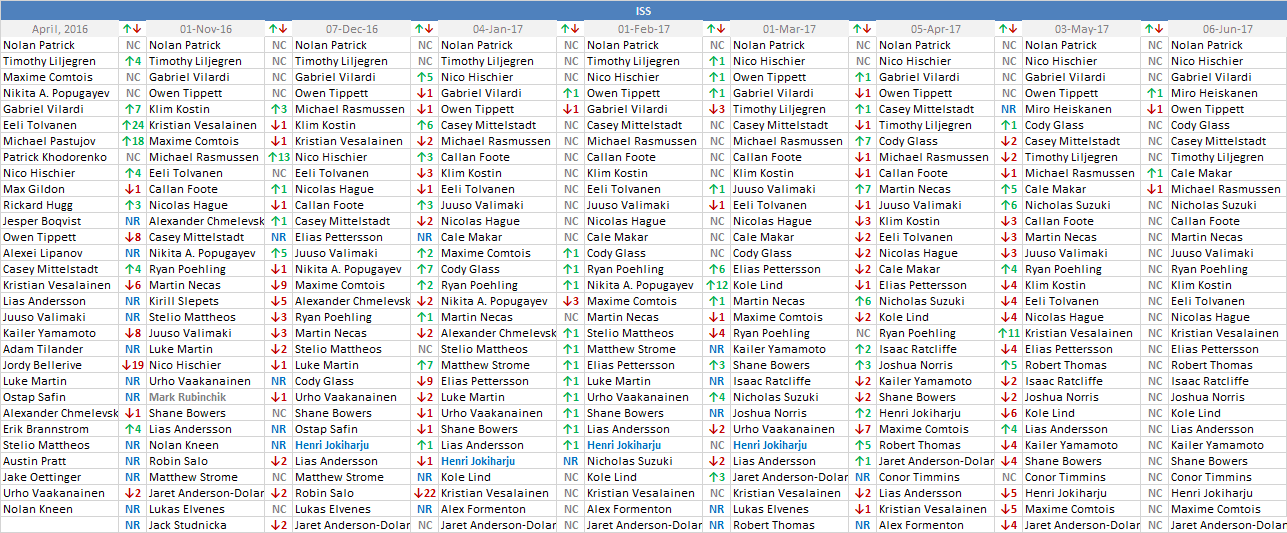
TSN Craig’s List

TSN Bob McKenzie

Sportsnet – Jeff Marek
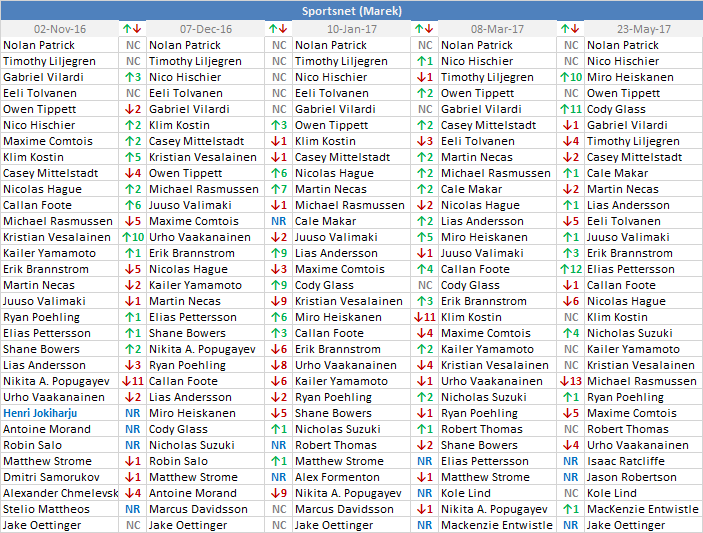
Other rankings that were included in the consolidation but left out here were the Hockey News (who only published two lists since the start of the season, from what I can tell), ESPN (all of their lists, right from player #1, are behind a pay wall), and Dobber Prospect and The Draft Analyst (because I only recently added their lists and don’t have previous versions for them).
Variance
I’ll tread lightly here, because the last time I went over draft ranking variance, I got in big trouble and had a paid subscription revoked. So I’ll start by saying, again, that variance is not a bad thing, and being “outlandish” is not an insult. If you end up being the best list, and the most outlandish, you look even smarter. So shoot for the stars people.
As a refresher, this chart measures variance by establishing the standard deviance for each player from the industry average, and then averaging all of that service’s deviations. The lower the average deviation, the more similar a list is to the consolidated average. The higher it is, the more a list differs from the average. Because standard deviations are used instead of integer differences, players with less variability are assessed as more of a deviation.
Anyway, here’s the variance within the first round for each list.

As you can see, the average first round deviance was 0.80. Our list had an average amount of deviance, with our biggest deviations being how low we had Michael Rasmussen, how high we had Cody Glass, and not buying into the Heiskanen hype. The list with the lowest deviance was Bob McKenzie’s rankings, just like last time. Again, this isn’t surprising, since his list is also a consolidated ranking, taken from industry scouts. The most deviant list this time around was Corey Pronman’s of ESPN, and I can’t even really tell you why, because it’s pay-walled Insider content. Let’s just say that there are hot taeks abound.
Finally, here’s an image of how each service varies on each prospect. Green indicates the player was ranked higher than the average, while red indicates lower than the average. The darker the colour, the further from the average (by standard deviation). Again, no paid content is included.
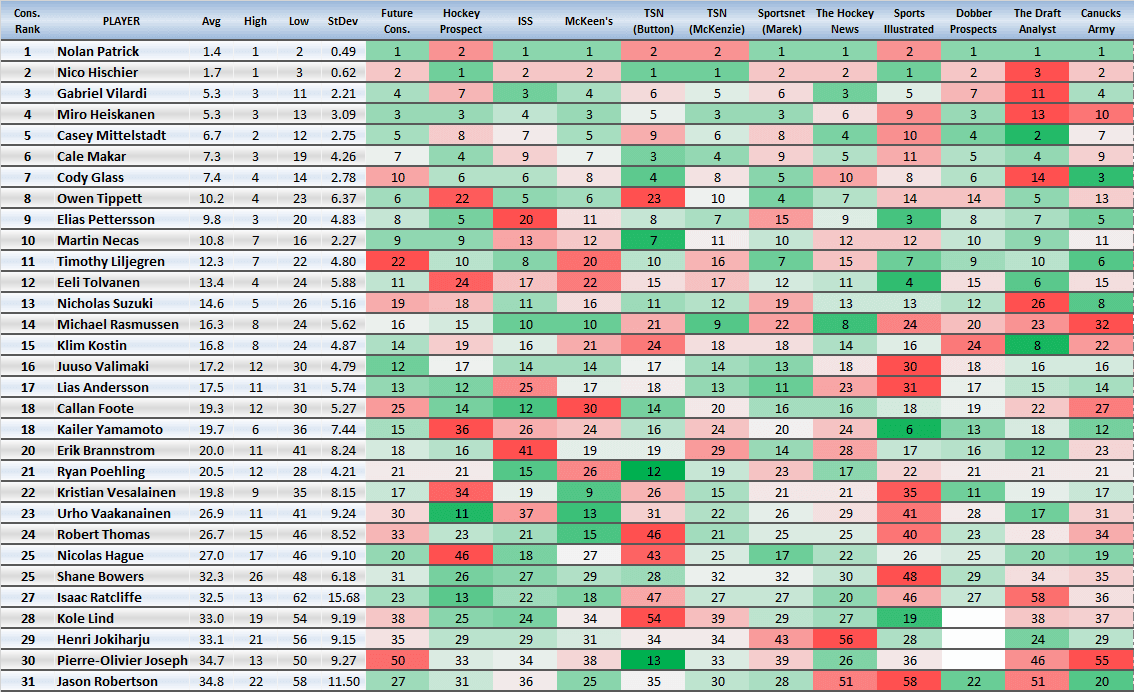
That’s it for the industry rankings this year! We’ve got just a few hours to go, so I hope you’ve crammed as much draft related knowledge as possible into your heads. It’s almost go time!
Recent articles from Jeremy Davis




